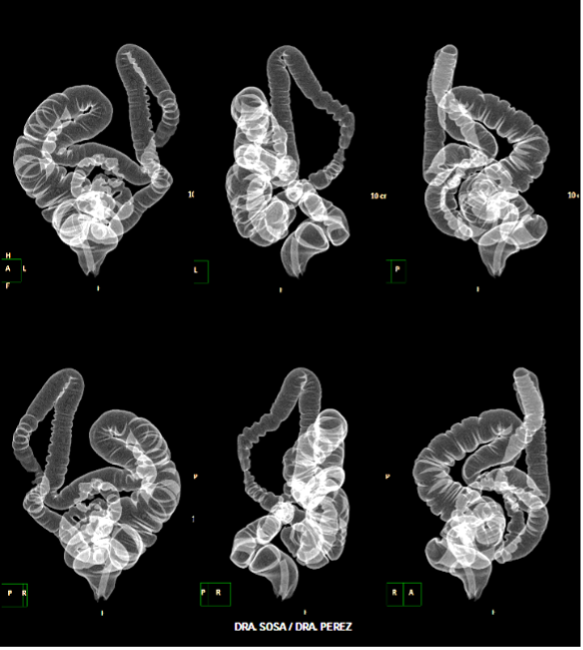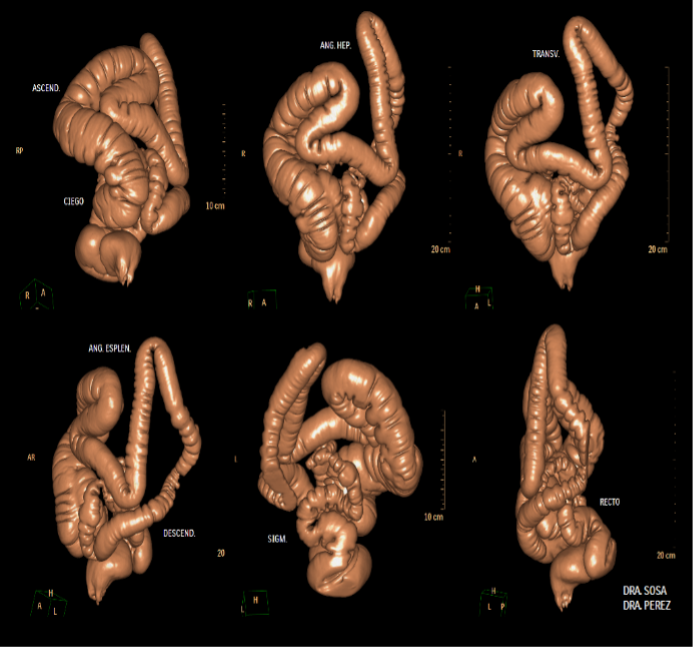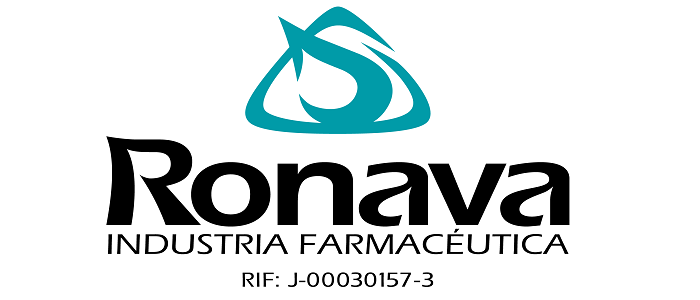Procedimientos endoscópicos y pandemia COVID-19: Consideraciones básicas
Resumen
Artículo publicado en la Revista Colombiana de Gastroenterología, con autorización para ser compartida por la Revista GEN de la Sociedad Venezolana de Gastroenterología.
El SARS-Cov-2 es un coronavirus productor de la enfermedad COVID-19. Esta inició en Wuhan, capital de la provincia Hubei, China. En menos de cuatro meses la enfermedad se dispersó por el mundo, lo que dio origen a miles de muertes. La Organización Mundial de la Salud (OMS) la ha declarado pandemia. La humanidad está consternada, múltiples gobiernos han obligado al aislamiento total, con éxito variable debido a la negligencia de parte de la comunidad. En muchas ciudades las instituciones y el personal sanitario no son suficientes para atender la catástrofe. El aislamiento es la única estrategia eficaz para detener el crecimiento logarítmico de COVID-19. El motivo científico del aislamiento es que más del 60 % de los contagios surgen de personas asintomáticas. La enfermedad no solo produce síntomas respiratorios. El SARS-Cov-2, además, puede producir náuseas, dolor abdominal, vómito, diarrea, anosmia y ageusia. El 50% de los infectados pueden tener síntomas digestivos, que incluso preceden a los respiratorios. La ruta fecal-oral trasmite el virus, aún sin diarrea. En las unidades de endoscopia están todas las formas de contagio: aerosoles (vómitos, arcadas, eructos, flatos), materia fecal, contacto estrecho, contaminación del ambiente. Se deben suspender todas las endoscopias programadas para diagnóstico. Solo deben realizarse las urgentes y terapéuticas. Todo el personal de endoscopia debe tener medidas de protección estrictas. El paciente debe saber que en la sala de endoscopia puede contagiarse, con constancia en el consentimiento informado. Debe contactarse al paciente posendoscopia vía telefónica a los días 7 y 14 para indagar sobre todos los síntomas mencionados.
Palabras clave
Texto completo:
PDFReferencias
Zhou W. The coronavirus prevention handbook: 101 science-based tips that could save your life [Internet]. 2020 [acceso 2020 Mar 26]. Disponible en: https://www.overdrive.com/search?q=76E6C249-9E76-47F7-B887- 592DCDB1B16E
WHO Director-General’s opening remarks at the media briefing on COVID-19 - 11 March 2020 [Internet]. [acceso 2020 Mar 25]. Disponible en: https://www.who.int/dg/speeches/detail/who-director-general-s-opening-remarksat-the-media-briefing-on-covid-19---11-march-2020
Huang C, Wang Y, Li X, Ren L, Zhao J, Hu Y, et al. Clinical features of patients infected with 2019 novel coronavirus in Wuhan, China. The Lancet. 2020;395(10223):497–506. https://doi.org/10.1016/S0140-6736(20)30183-5
China’s first confirmed Covid-19 case traced back to November 17 [Internet]. South China Morning Post. 2020 [acceso 2020 Mar 24]. Disponible en: https://www.scmp.com/news/china/society/article/3074991/coronaviruschinas-first-confirmed-covid-19-case-traced-back
Hoffmann M, Kleine-Weber H, Krüger N, Müller M, Drosten C, Pöhlmann S. The novel coronavirus 2019 (2019-nCoV) uses the SARS-coronavirus receptor ACE2 and the cellular protease TMPRSS2 for entry into target cells [Internet]. Molecular Biology; 2020 Jan [acceso 2020 Mar 23]. Disponible en: http://biorxiv.org/lookup/doi/10.1101/2020.01.31.929042 https://doi.org/10.1101/2020.01.31.929042. [Epub ahead of print].
Zou X, Chen K, Zou J, Han P, Hao J, Han Z. Single-cell RNA-seq data analysis on the receptor ACE2 expression reveals the potential risk of different human organs vulnerable to 2019-nCoV infection. Front Med [Internet]. 2020 Mar 12 [acceso 2020 Mar 23]; Disponible en: http://link.springer.com/10.1007/s11684-020-0754-0 https://doi.org/10.1007/s11684-020-0754-0
Zhao Y, Zhao Z, Wang Y, Zhou Y, Ma Y, Zuo W. Single-cell RNA expression profiling of ACE2, the putative receptor of Wuhan 2019-nCov [Internet]. Bioinformatics; 2020 Jan [acceso 2020 Mar 23]. Disponible en: http://biorxiv.org/lookup/doi/10.1101/2020.01.26.919985 https://doi.org/10.1101/2020.01.26.919985
Smith JA, Judd J. COVID-19: Vulnerability and the power of privilege in a pandemic. Health Promot J Austr [Internet]. 2020 Mar 20 [acceso 2020 Mar 20]; Disponible en: http://doi.wiley.com/10.1002/hpja.333 https://doi.org/10.1002/hpja.333. [Epub ahead of print].
WHO. Summary of probable SARS cases with onset of illness from 1 November 2002 to 31 July 2003. [Internet]. Dec 31, 2003 [acceso 2020 Mar 19]. https://www.who.int/csr/sars/country/table2004_04_21/en/
Li J-Y, You Z, Wang Q, Zhou Z-J, Qiu Y, Luo R, et al. The epidemic of 2019-novel-coronavirus (2019-nCoV) pneumonia and insights for emerging infectious diseases in the future. Microbes Infect. 2020;22(2):80–5. https://doi.org/10.1016/j.micinf.2020.02.002
Lu R, Zhao X, Li J, Niu P, Yang B, Wu H, et al. Genomic characterisation and epidemiology of 2019 novel coronavirus: implications for virus origins and receptor binding. The Lancet. 2020;395(10224):565–74. https://doi.org/10.1016/S0140-6736(20)30251-8
Zhang T, Wu Q, Zhang Z. Probable Pangolin Origin of SARS-CoV-2 Associated with the COVID-19 Outbreak. Curr Biol. 2020 Mar;S0960982220303602. https://doi.org/10.1016/j.cub.2020.03.022. [Epub ahead of print].
Pangolin. In: Wikipedia [Internet]. 2020 [acceso 2020 Mar 23]. Disponible en: https://en.wikipedia.org/w/index.php?title=Pangolin&oldid=947412030
Gu J, Han B, Wang J. COVID-19: Gastrointestinal manifestations and potential fecal-oral transmission. Gastroenterology. 2020;S001650852030281X. https://doi.org/10.1053/j.gastro.2020.02.054
WEO ALERT: Wuhan proposal for Safety in Digestive Endoscopy [Internet]. [acceso 2020 Mar 23]. Disponible en: http://www.worldendo.org/2020/02/05/weo-alertwuhan-proposal-for-safety-in-digestive-endoscopy/
Pan L, Mu M, Yang P, Sun Y, Yan J, Li P, et al. Clinical characteristics of COVID-19 patients with digestive symptoms in Hubei, China: a descriptive, cross-sectional, multicenter study. Article in press.
Luo S, Zhang X, Xu H. Don’t overlook digestive symptoms in patients with 2019 novel coronavirus disease (COVID-19).Clin Gastroenterol Hepatol. 2020 Mar 20. pii: S1542-3565(20)30401- 8. doi: https://doi.org/10.1016/j.cgh.2020.03.043. [Epub ahead of print]
Xiao F, Tang M, Zheng X, Liu Y, Li X, Shan H. Evidence for gastrointestinal infection of SARSCoV-2. Gastroenterology. 2020; S0016508520302821. doi: https://doi.org/10.1053/j.gastro.2020.02.055 [Epub ahead of print]
Holshue ML, DeBolt C, Lindquist S, Lofy KH, Wiesman J, Bruce H, et al. First Case of 2019 Novel Coronavirus in the United States. N Engl J Med. 2020;382(10):929–36. https://doi.org/10.1056/NEJMoa2001191
Li Y, Bai W, Hashikawa T. The neuroinvasive potential of SARS‐ CoV2 may be at least partially responsible for the respiratory failure of COVID‐19 patients. J Med Virol. 2020;jmv.25728. https://doi.org/10.1002/jmv.25728
Wu Z, McGoogan JM. Characteristics of and Important Lessons From the Coronavirus Disease 2019 (COVID-19) Outbreak in China: Summary of a Report of 72 314 Cases From the Chinese Center for Disease Control and Prevention. JAMA [Internet]. 2020 Feb 24 [acceso 2020 Mar 26]; Disponible en: https://jamanetwork.com/journals/jama/fullarticle/2762130 https://doi.org/10.1001/jama.2020.2648
Center for Disease Control and Prevention. Filtering out Confusion: Frequently Asked Questions about Respiratory Problems [Internet]. [cited 2020 Mar 23]. Available from: https://www.cdc.gov/niosh/docs/2018-128/pdfs/2018-128.pdf?id=10.26616/NIOSHPUB2018128
Yeo C, Kaushal S, Yeo D. Enteric involvement of coronaviruses: is faecal–oral transmission of SARS-CoV-2 possible? Lancet. 2020;5(4):335-337. https://doi.org/10.1016/S2468-1253(20)30048-0
CUHK Finds that the Coronavirus Can Persist in Stool after Its Clearance in Respiratory Tract Will Conduct Stool Test for People in Quarantine Camps for Early Identification [Internet]. [acceso 2020 Mar 21]. Disponible en: https://www.med.cuhk.edu.hk/press-releases/cuhk-finds-thatthe-coronavirus-can-persist-in-stool-after-its-clearance-inrespiratory-tract-will-conduct-stool-test-for-people-in-quarantine-camps-for-early-identification
Wang XW, Li J, Guo T, Zhen B, Kong Q, Yi B, et al. Concentration and detection of SARS coronavirus in sewage from Xiao Tang Shan hospital and the 309th Hospital of the Chinese People’s Liberation Army. Water Sci Technol. 2005;52(8):213–21. https://doi.org/10.2166/wst.2005.0266
Wei J, Li Y. Airborne spread of infectious agents in the indoor environment. Am J Infect Control. 2016;44(9):S102–8. https://doi.org/10.1016/j.ajic.2016.06.003
Doremalen N, Bushmaker T, Morris DH, et al. Aerosol and Surface Stability of SARS-CoV-2 as Compared with SARSCoV-1 [published online ahead of print, 2020 Mar 17]. N Engl J Med. 2020;10.1056/NEJMc2004973. doi: https://doi.org/10.1056/NEJMc2004973
Fabian P, McDevitt JJ, DeHaan WH, Fung ROP, Cowling BJ, Chan KH, et al. Influenza Virus in Human Exhaled Breath: An Observational Study. Fouchier RAM, editor. PLoS ONE. 2008;3(7):e2691. https://doi.org/10.1371/journal.pone.0002691
Lindsley WG, Blachere FM, Thewlis RE, Vishnu A, Davis KA, Cao G, et al. Measurements of Airborne Influenza Virus in Aerosol Particles from Human Coughs. Pekosz A, editor. PLoS ONE. 2010;5(11):e15100. https://doi.org/10.1371/journal.pone.0015100
Zhang H, Kang Z, Gong H, Xu D, Wang J, Li Z, et al. The digestive system is a potential route of 2019-nCov infection: a bioinformatics analysis based on singlecell transcriptomes [Internet]. Microbiology; 2020 Jan [acceso 2020 Mar 23]. Disponible en: http://biorxiv.org/lookup/doi/10.1101/2020.01.30.927806 https://doi.org/10.1101/2020.01.30.927806
Xu H, Zhong L, Deng J, Peng J, Dan H, Zeng X, et al. High expression of ACE2 receptor of 2019-nCoV on the epithelial cells of oral mucosa. Int J Oral Sci. 2020;12(1):1-5. https://doi.org/10.1038/s41368-020-0074-x
Chai X, Hu L, Zhang Y, Han W, Lu Z, Ke A, et al. Specific ACE2 Expression in Cholangiocytes May Cause Liver Damage After 2019-nCoV Infection [Internet]. Genomics; 2020 Feb [acceso 2020 Mar 22]. Disponible en: http://biorxiv.org/lookup/doi/10.1101/2020.02.03.931766 https://doi.org/10.1101/2020.02.03.931766
Diaz JH. Hypothesis: angiotensin-converting enzyme inhibitors and angiotensin receptor blockers may increase the risk of severe COVID-19. J Travel Med. 2020;taaa041. https://doi.org/10.1093/jtm/taaa041
HFSA/ACC/AHA Statement Addresses Concerns Re: Using RAAS Antagonists in COVID-19 [Internet]. American College of Cardiology. [acceso 2020 Mar 22]. Disponible en: https://www.acc.org/latest-in-cardiology/articles/2020/03/17/08/59/hfsa-acc-aha-statementaddresses-concerns-re-using-raas-antagonists-in-covid-19
Simone C. Position Statement of the ESC Council on Hypertension on ACE-Inhibitors and Angi [Internet]. [acceso 2020 Mar 26]. Disponible en: https://www.escardio.org/Councils/Council-on-Hypertension-(CHT)/News/position-statement-of-the-esc-council-on-hypertension-on-ace-inhibitors-and-ang
Muscarella LF. Recommendations for the prevention of transmission of SARS during GI endoscopy. Gastrointest Endosc. 2004;60(5):792–5. https://doi.org/10.1016/S0016-5107(04)01858-9
Chapman S. Hot air? BMJ. 2001;323(7327):1449–1449. https://doi.org/10.1136/bmj.323.7327.1449
World Health Organization. Rational use of personal protective equipment for coronavirus disease (COVID-19): interim guidance, 27 February 2020. 2020 [acceso 2020 Mar 22]; Disponible en: https://extranet.who.int/iris/restricted/handle/10665/331215
Johnston ER, Habib-Bein N, Dueker JM, Quiroz B, Corsaro E, Ambrogio M, et al. Risk of bacterial exposure to the endoscopist’s face during endoscopy. Gastrointest Endosc. 2019;89(4):818–24. https://doi.org/10.1016/j.gie.2018.10.034
Repici A, Maselli R, Colombo M, Gabbiadini R, Spadaccini M, Anderloni A, et al. Coronavirus (COVID19) outbreak: what the department of endoscopy should know. Gastrointest Endosc. 2020;S0016510720302455. https://doi.org/10.1016/j.gie.2020.03.019
JOINT GI SOCIETY MESSAGE: COVID-19 Clinical Insights for Our Community of Gastroenterologists and Gastroenterology Care Providers [Internet]. Default. [acceso 2020 Mar 20]. Disponible en: https://www.asge.org/home/joint-gi-society-message-covid-19
Ayittey FK, Ayittey MK, Chiwero NB, Kamasah JS, Dzuvor C. Economic impacts of Wuhan 2019-nCoV on China and the world.J Med Virol. 2020;92(5):473-475. https://doi.org/10.1002/jmv.25706
World Health Organization. Disease commodity package - Novel Coronavirus (nCoV). Operational Support & Logistics Disease Commodity Packages [Internet]. [acceso 2020 Mar 20]. Disponible en: https://www.who.int/emergencies/what-we-do/prevention-readiness/disease-commodity-packages/dcp-ncov.pdf
Shah SL, Carr-Locke D. ERCP for acute cholangitis: timing is everything. Gastrointestinal Endoscopy. 2020;91(4):761- 762. https://doi.org/10.1016/j.gie.2019.12.010
ESGE and ESGENA Position Statement on gastrointestinal endoscopy and the COVID-19 pandemic – European Society of Gastrointestinal Endoscopy (ESGE) [Internet]. [acceso 2020 Mar 22]. Disponible en: https://www.esge.com/esge-and-esgena-position-statement-on-gastrointestinal-endoscopy-and-the-covid-19-pandemic/
Sociedad Española de Endoscopia Digestiva (SEED). Recomendaciones de la SEED: Protección en Unidades de Endoscopia frente al COVID-19 [Internet]. [acceso 2020 Mar 23]. Disponible en: https://wseed.es/images/site/guia_clinica/2020/RecomendacionesSEED_ProteccionUnidadesEndoscopia_Coronavirus.pdf
Johnston ER, Habib-Bein N, Dueker JM, et al. Risk of bacterial exposure to the endoscopists face during endoscopy. Gastrointest Endosc. 2019; 89: 818–824. https://doi.org/10.1016/j.gie.2018.10.034
Cao Z, Zhang Q, Lu X, Pfeiffer D, Jia Z, Song H, Zeng DD. Estimating the effective reproduction number of the 2019-nCoV in China. [Internet]. [acceso 2020 Mar 23]. Disponible en: medRxiv 2020.01.27.20018952; doi: https://doi.org/10.1101/2020.01.27.20018952
Zhang Y, Zhang X, Liu L, Wang H, Zhao Q. Suggestions of Infection Prevention and Control in Digestive Endoscopy During Current 2019-nCoV Pneumonia Outbreak in Wuhan, Hubei Province, China. [acceso 2020 Mar 23]; Disponible en: http://www.worldendo.org/wp-content/uploads/2020/02/Suggestions-of-Infection-Prevention-and-Control-inDigestive-Endoscopy-During-Current-2019-nCoVPneumonia-Outbreak-in-Wuhan-Hubei-Province-China.pdf
Wang X, Pan Z, Cheng Z. Association between 2019- nCoV transmission and N95 respirator use. J Hosp Infect [Internet]. 2020 Mar 3. Available from: http://www.ncbi.nlm.nih.gov/pubmed/3214288
Beilenhoff U, Biering H, Blum R, et al. Reprocessing of flexible endoscopes and endoscopic accessories used in gastrointestinal endoscopy: Position Statement of the European Society of Gastrointestinal Endoscopy (ESGE) and European Society of Gastroenterology Nurses and Associates (ESGENA) - Update 2018. Endoscopy. 2018;50:1205–1234.
Petersen BT, Cohen J, Hambrick RD, Buttar N, Greenwald DA, Buscaglia JM, et al. Multisociety guideline on reprocessing flexible GI endoscopes: 2016 update. Gastrointest Endosc. 2017;85(2):282-294.e1. https://doi.org/10.1016/j.gie.2016.10.002
Forbes N, Elmunzer BJ, Allain T, Chau M, Koury HF, Bass S, et al. Infection control in ERCP using a duodenoscope with a disposable cap (ICECAP): rationale for and design of a randomized controlled trial. BMC Gastroenterol. 2020;20(1):64. https://doi.org/10.1186/s12876-020-01200-7
Yang R, Ng S, Nichol M, Laine L. A cost and performance evaluation of disposable and reusable biopsy forceps in GI endoscopy. Gastrointest Endosc. 2000;51(3):266–70. https://doi.org/10.1016/S0016-5107(00)70353-1
Rutala WA, Weber D. Center for Disease Control and Prevention (CDC). Disinfection of Healthcare Equipment. Guideline for Disinfection and Sterilization in Healthcare Facilities (2008). Disponible en: https://www.cdc.gov/infectioncontrol/pdf/guidelines/disinfection-guidelines-H.pdf
Calderwood AH, Chapman FJ, Cohen J, Cohen LB, Collins J, Day LW, et al. Guidelines for safety in the gastrointestinal endoscopy unit. Gastrointest Endosc. 2014;79(3):363–72. https://doi.org/10.1016/j.gie.2013.12.015
Calderwood AH, Day LW, Muthusamy VR, Collins J, Hambrick RD, Brock AS, et al. ASGE guideline for infection control during GI endoscopy. Gastrointest Endosc. 2018;87(5):1167–79. https://doi.org/10.1016/j.gie.2017.12.009
Geller C, Varbanov M, Duval R. Human Coronaviruses: Insights into Environmental Resistance and Its Influence on the Development of New Antiseptic Strategies. Viruses. 2012; 4(11): 3044–68. https://doi.org/10.3390/v4113044
Rio C del, Malani PN. COVID-19—New Insights on a Rapidly Changing Epidemic. JAMA [Internet]. 2020 Feb 28 [acceso 2020 Mar 22]; Disponible en: https://jamanetwork.com/journals/jama/fullarticle/2762510 https://doi.org/10.1001/jama.2020.3072
Soetikno R, Teoh A, Kaltenbach T, Lau J, Asokkumar R, Cabral-Prodigalidad P. Considerations in performing endoscopy during the COVID-19 pandemic; Joint GI Society Message: Gastroenterology COVID-19 Guide: Telehealth March 20, 2020.
Bai Y, Yao L, Wei T, Tian F, Jin D-Y, Chen L, et al. Presumed Asymptomatic Carrier Transmission of COVID-19. JAMA [Internet]. 2020 Feb 21 [acceso 2020 Mar 22]; Disponible en: https://jamanetwork.com/journals/jama/fullarticle/2762028 https://doi.org/10.1001/jama.2020.2565
Kampf G, Todt D, Pfaender S, Steinmann E. Persistence of coronaviruses on inanimate surfaces and their inactivation with biocidal agents. J Hosp Infect. 2020;104(3):246–51. https://doi.org/10.1016/j.jhin.2020.01.022
World Health Organization. Rational use of personal protective equipment for coronavirus disease 2019 (COVID19). Interim guidance 27 February 2020.
DOI: http://dx.doi.org/10.61155/gen.v73i0.487
IMÁGENES GEN
Autor: Dra. MARIA ISABEL RAMIREZ LÓPEZ - Volumen 79 (4) GEN 2025
 | |
| POSPROCESAMIENTO DE IMÁGENES TOMOGRÁFICAS DE COLON PARA DIAGNOSTICAR CASOS DESAFIANTES. Autor: Dr. SERGIO MARTINEZ-MILLAN - Volumen 79 (4) GEN 2025 | |
 |  |
 |  |  |
ISSN: 0016-3503 e-ISSN: 2477-975X








